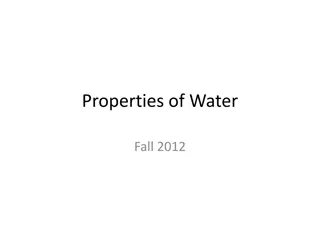Coherence and Cohesion
Cohesion and coherence play crucial roles in academic writing by ensuring logical flow and connection between ideas. Cohesion involves linking sentences using devices like conjunctions, pronouns, and repetition, while coherence focuses on organizing ideas into paragraphs that logically develop the argument. To enhance cohesion and coherence, writers should use linking words effectively, structure paragraphs coherently, plan the argument flow, and ensure each part contributes to the unity of the text.
Download Presentation

Please find below an Image/Link to download the presentation.
The content on the website is provided AS IS for your information and personal use only. It may not be sold, licensed, or shared on other websites without obtaining consent from the author. Download presentation by click this link. If you encounter any issues during the download, it is possible that the publisher has removed the file from their server.
E N D
Presentation Transcript
Coherence and Cohesion Academic English Session 02 Group A
Cohesion and coherence are important aspects of the structure of academic writing as they have an influence on the readability and logical flow of the argument of a text. What is Cohesion and Coherence? Cohesion refers to the logical flow and connection in a written text and is achieved through the use of devices to link sentences together so that there is a logical flow between ideas from one sentence to the next. Coherence refers to the unity or togetherness of the text as a whole and is achieved through the effective grouping and arrangement of ideas in a logical order
Information and ideas are sorted into paragraphs to make the writing more logical and to ensure that the argument flows and develops logically. What is Cohesion and Coherence? To achieve cohesion and coherence paragraphs and sentences need to be clearly linked to each other to logically and linguistically form a whole. Every paragraph needs a focus or a theme and all parts of the paragraph must contribute to this
Cohesion Cohesion in paragraphs can be achieved by the use of linking devices and logical connectors to link sentences. These devices include a variety of elements, e.g. conjunctions, the use of pronouns and the repetition of certain words. It is important to use them correctly and not overuse certain linking phrases.
Discussion Discuss uses of the words in the previous slide Individual Activity Write sentences using the linking words Group Activity Create a conversation with your partner including these linking words
Coherence Paragraphs have to be coherent. This means that the parts of your paragraph need to link to each other in a logical way so that the reader may easily follow the development of your ideas and argument. Ensure that your arguments are logically structured and arranged Develop arguments logically using paragraphs Be sure to have a clear introduction, body and conclusion Make sure every part of the text fits together Ensure that every new paragraph is related to the previous one Plan the flow and development of your argument before you start writing Ensure that paragraphs are conceptually linked, and not only sentences
Coherence can be achieved in a number of ways: Repeating key nouns Using consistent pronouns Substituting nouns with pronouns in an effective way, A text that does not use pronouns to some extent will come across as overly repetitive. Using transition signals to link ideas transition signals (sometimes called linking words or linking adverbials) - has to do with the use of specific words and phrases that evoke links and transition between ideas Arranging your ideas in logical order There are several different kinds of logical order, but some of the more frequently used are chronology, importance, and contrast.
1. Repeating a word or words from the first sentence in the second sentence. Ex: Energy in food is measured in calories. Approximately 50% of the calories we consume are used in physical activity seven ways in which writers can link sentences together to form texts 2.Use a synonym (word with the same meaning) of a word from the first sentence in the second. Ex: The surroundings in which we carry out our daily lives are very important to us. We are continually aware of our environment as we go about our business 3. Use a pro-form (e.g. pronoun) in the second sentence. Ex: Trees are an essential part of a city's development. They help reduce pollution and provide shade.
4. Use a sequence marker [e.g. Firstly, secondly/ a), b), c)] Ex: The maize plant faces two main pests. The first is the weevil borer whose larvae eat their way through the maize plant. seven ways in which writers can link sentences together to form texts 5. Repeat a sentence structure Ex: We need to make our buildings more energy efficient. We need to make our cars less polluting 6. Use connectives (e.g. addition, time relaters) Ex: The UAE is spending a lot of money to improve its environment. For example, it invested millions of dollars developing forests in the desert 7. Use a hyponym (e.g. police station -> building | car -> means of transport) Ex: We are losing rain forests at a great rate. Millions of trees are being cut down every week






















